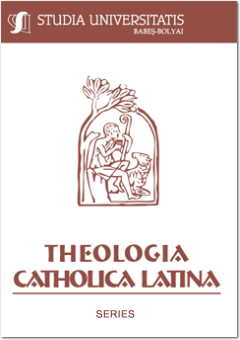THE IMPACT OF REFORMATION IN THE TRANSYLVANIAN DIOCESE AND THE BEGINNINGS OF CATHOLIC REVIVAL
THE IMPACT OF REFORMATION IN THE TRANSYLVANIAN DIOCESE AND THE BEGINNINGS OF CATHOLIC REVIVAL
Author(s): László HollóSubject(s): Christian Theology and Religion, History of Church(es), Theology and Religion, Comparative Studies of Religion, Religion and science , Biblical studies, Systematic Theology
Published by: Studia Universitatis Babes-Bolyai
Keywords: Reformation; semper reformanda; Catholic Revival; Transylvanian Diocese; Catholic Status of Transylvania; The Role of the Laity in the Catholic Church;
Summary/Abstract: At the beginning of the 16th century the Diocese of Transylvania, which was over 60,000 square meters, had an extensive ecclesiastical infrastructure. Under the bishop‘s leadership, a 24-member cathedral chapter led the 600 parishes in the thirteen main districts. More than 1,000 monks lived in over fifty monasteries. This seemingly powerful community has practically ceased to exist within the short 25 to 30 years due to the desire for spiritual renewal and social policy. Without its bishopric and chapter leader, there was only one monastery and about thirty parishes. It was saved from the total destruction by the incredibly coherent and persistent work of the Jesuits, and by the counter-reformation that strengthened with the help of the Habsburgs, and by - most of all - the few faithful Catholics and their self-organizing activities. Thus, the Catholic autonomy was strengthened by the hierarchically organized Catholic Church that secular believers gained a status that is unique throughout the world. The purpose of my paper is to present that age and the birth of Catholic Status, also known as Catholic autonomy.
Journal: Studia Universitatis Babes-Bolyai - Theologia Catholica Latina
- Issue Year: 64/2019
- Issue No: 2
- Page Range: 35-72
- Page Count: 38
- Language: English

